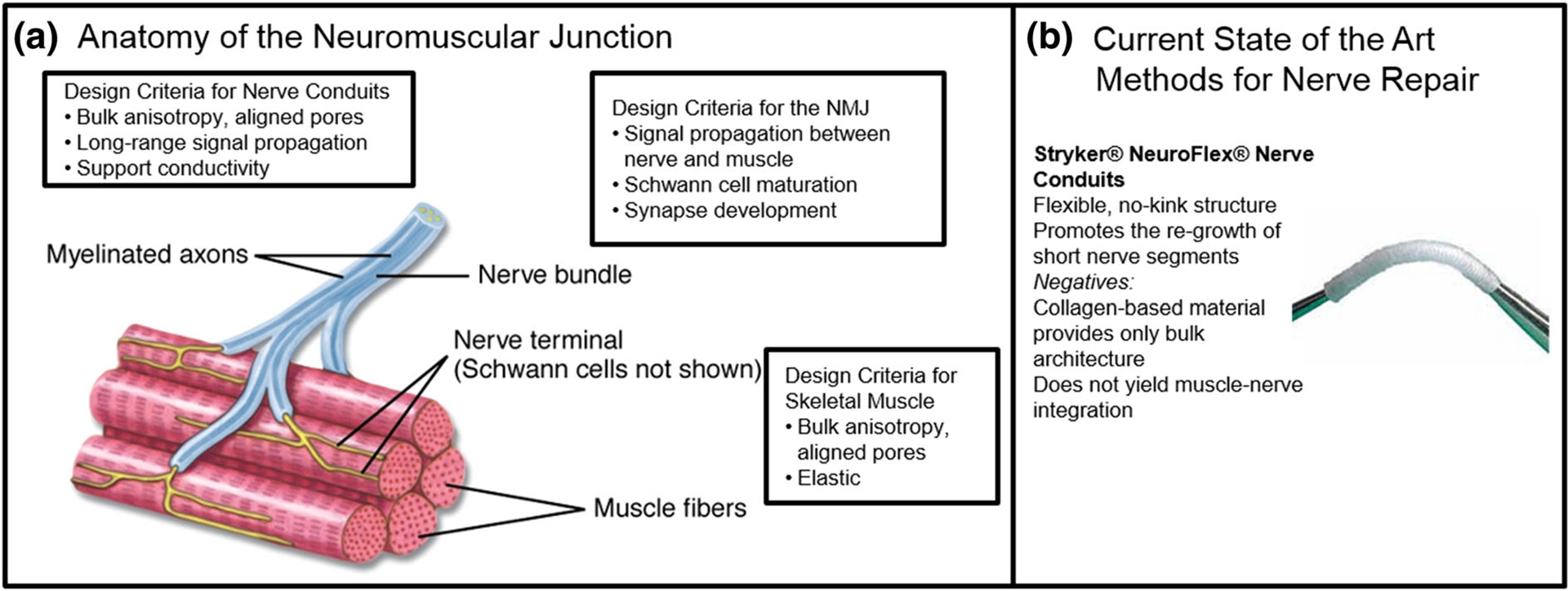FIGURE 2.

Engineering the neuromuscular junction (NMJ). (a) Anatomy of the neuromuscular junction showing myelinated axons of the nerve bundle interfacing with the striated muscle fibers at the nerve terminal. Design criteria for nerve conduits and skeletal muscle-NMJ interface include bulk alignment, elasticity, long-range signal propagation, and conductivity as well as efficient signal transmission to the sarcomere to elicit muscular response. (b) Commercially available scaffolds for nerve repair, such as Stryker NeuroFlex, are clinically available for implantation to promote the re-growth of short nerve segments. However, these conduits are only able to address nerve injuries or gaps of less than a critical size of 2.5 cm, nor can they provide effective muscle-nerve connectivity, which is essential for the regeneration of traumatic skeletal muscle and nerve injuries.
